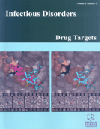
Full text loading...
We use cookies to track usage and preferences.I Understand

Cuts and wounds are unfortunate yet inevitable events. Traditional remedies have historically harnessed various plants for wound healing, undergoing clinical and pre-clinical scrutiny. Hence, this systematic review focuses on clinically researched herbal formulations for wound healing.
Following Preferred Reporting Items for Systematic Reviews and Meta-Analyses (PRISMA) guidelines, databases like Google Scholar, Web of Science, PubMed, Scopus, J-gate, and Ayush Research Portal were meticulously searched for clinical trials involving wound-targeting herbal formulations, alongside a comprehensive hunt for preclinical plant data.
Among 623 screened documents, 26 published clinical trials spotlighting herbal wound healing formulations were identified. All studies showcased significant wound healing progress, with some surpassing standard betadine treatment. Only one study reported an adverse effect. Within the 26 formulations, 45 distinct plant species were employed, with 35 exhibiting wound healing attributes like antimicrobial, anti-inflammatory, and antioxidant activities scientifically. Enhanced collagen content, stabilized fibers, activated fibroblast cells, increased total protein, elevated growth factors, hydroxyproline, hexosamine, and tissue protein demonstrate the efficacy of plants, such as Hypericum perforatum, Centella asiatica, and Calendula officinalis in wound healing.
The findings of the current study indicated that medicinal plants are effective and safe agents for the treatment of wounds, though larger, well-designed trials are needed for definitive role confirmation.

Article metrics loading...

Full text loading...
References


Data & Media loading...
Supplements